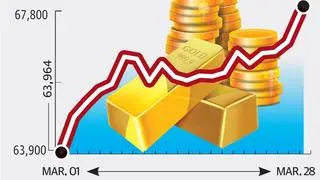Previously in this column, we discussed why in-the-money (ITM) strikes may not be optimal for long positions. This week, we continue this discussion to show why at-the-money (ATM) calls and immediate out-of-the-money (OTM) calls are preferable to ITM calls.
Delta matters
With the Nifty Index trading at 19736, consider the next-week 19500 call and the 19750 call. The former is ITM, and the latter can be considered as ATM. Note that an ATM call is one that has a delta close to 0.50 based on the Black-Scholes-Merton option valuation model. The 19750 call has a delta of 0.52.
Now, suppose the Nifty Index increases 200 points to 19936 three days after you initiate a long call position. The 19500 call will most likely move to 459, an increase of 68 per cent, and the 19750 call to 234, an increase of 83 per cent. The variation in returns can be explained by the way the strikes react to the change in the underlying price. The delta of the 19750 call is likely to increase from 0.52 to 0.80, whereas the delta of the 19500 call is likely to increase from 0.81 to 0.96. Why?
The answer lies with the gamma of the respective options. Note that gamma is the change in delta for a one-point change in the underlying price. So, when an underlying increases by one point, the new delta is the old delta plus the gamma. This means the delta is increasing as the underlying moves up. This increase is more when the gamma is higher. ATM options have higher gamma; the gamma typically reduces the further the strikes are from the spot price. So, ITM and OTM strikes have lower gamma than the ATM strike.
The above argument has an implication on your trading strategies. An ATM and immediate OTM strikes generate more returns when the underlying moves up, as the change in their delta is greater than for ITM strikes. There is a flip side to the argument. The ATM strike has the highest time value. Because the time value of an option must become zero at expiry, the ATM strike has a higher time decay (loss) than ITM strikes.
Optional reading
An ATM strike has only time value. Therefore, gains from intrinsic value must be more than the loss in time value for the position to be profitable. This is possible for ATM call because it can gain one-for-one in intrinsic value as soon as the underlying moves up and the ATM strike becomes ITM. True, ITM strikes also gain one-for-one in intrinsic value when the underlying moves up. But you must pay for the existing intrinsic value, increasing the option’s absolute price. If an ITM call has, say, 50 points of intrinsic value, you pay 50 points as part of the option price. Finally, be mindful that increase in volatility is harmful for ITM strikes and is beneficial to the ATM strike.
The author offers training programmes for individuals to manage their personal investments









Comments
Comments have to be in English, and in full sentences. They cannot be abusive or personal. Please abide by our community guidelines for posting your comments.
We have migrated to a new commenting platform. If you are already a registered user of TheHindu Businessline and logged in, you may continue to engage with our articles. If you do not have an account please register and login to post comments. Users can access their older comments by logging into their accounts on Vuukle.